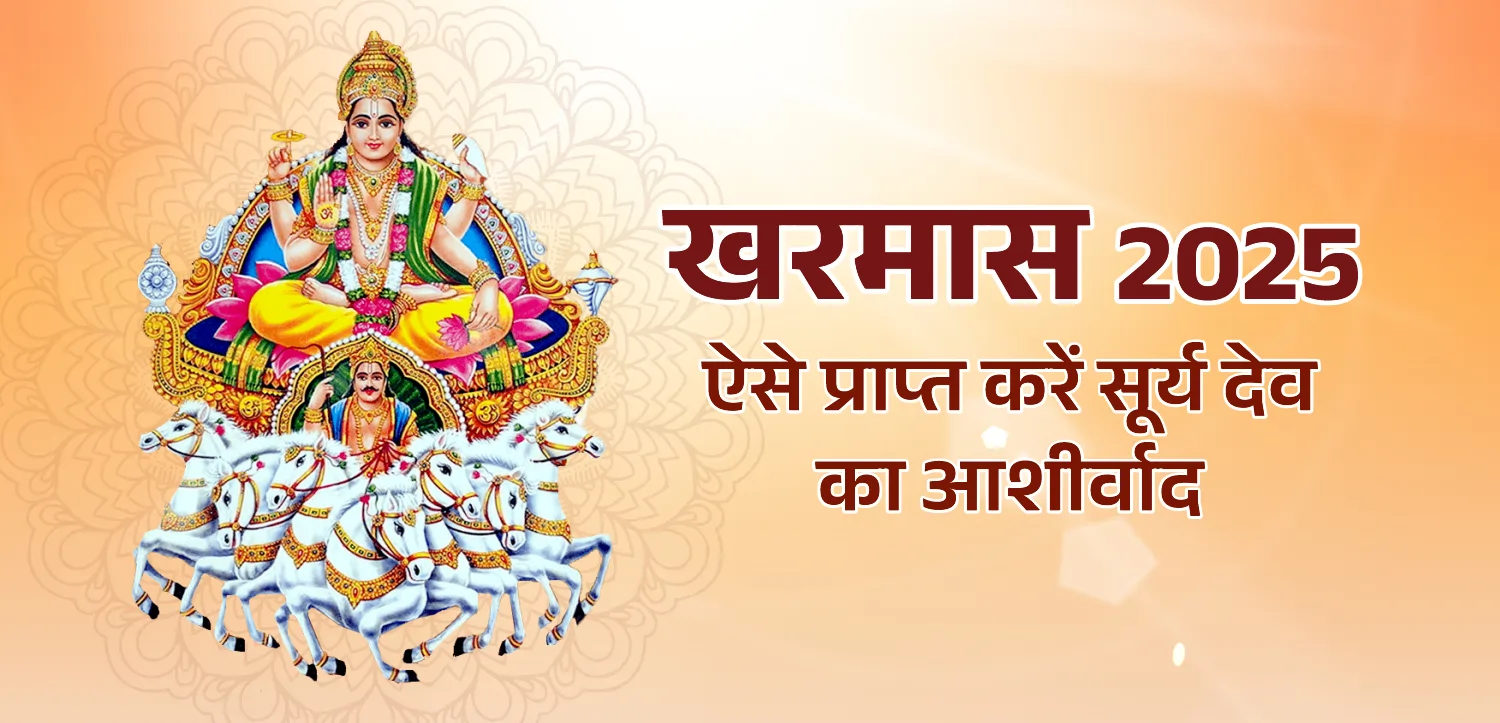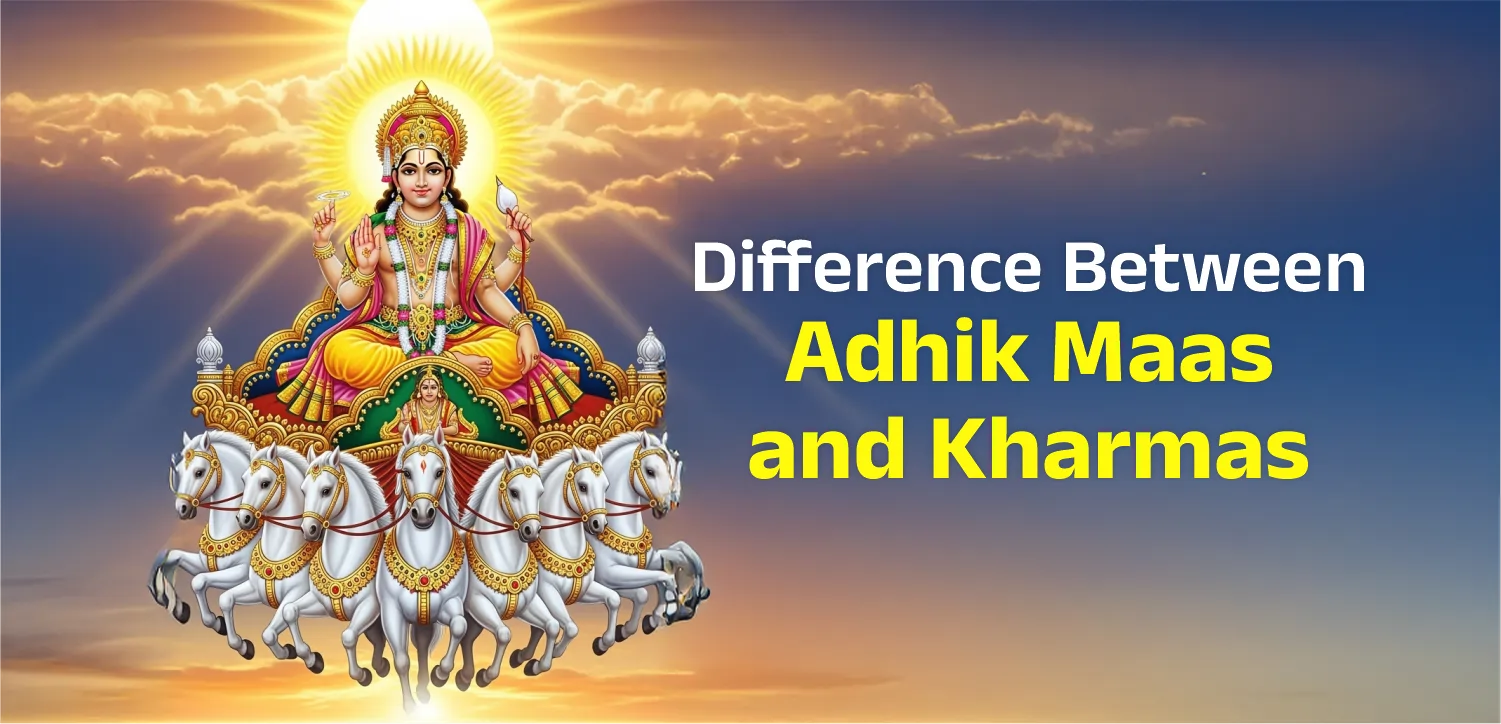In Hinduism, every moment of time is considered a gift from God. Of the twelve months of the year, some periods are considered especially virtuous, while others are described in the scriptures as a time of taboos and restraint. One of these periods is Kharmas, also known as Malmas or Purushottam Maas.
Although the common people consider it a time of prohibition for auspicious activities, the scriptures hold a profound spiritual secret behind it. This is the month that removes us from the external world and connects us with the Lord within, removing us from worldly celebrations and ushering us into the celebration of the soul.
The Beginning and Significance of Kharmas
Kharmas begins when the Sun enters Sagittarius or Pisces. During this period, the Sun is not considered to be in its best motion, which is why it is called a period of instability. However, from a spiritual perspective, this instability calls for restraint of our inner instincts.
Scriptures state that during this time, Lord Vishnu himself assumes the form of an ascetic and inspires seekers to fast, chant, meditate, and perform good deeds. Kharmas reminds us that life is not merely about celebrations, festivities, and pleasures; rather, inner peace, self-realization, and remembrance of God are the highest purposes of human life.
When does Kharmas begin?
This year, the Sun God will enter Pisces on December 16th. Therefore, Kharmas will be considered to begin on this day. Kharmas will also conclude with the beginning of Makar Sankranti on January 14th.
The Legend of Malmas
According to mythology, the Sun God continuously travels around the universe on a chariot drawn by seven horses. Due to this constant journey, his horses become very tired and thirsty. Saddened by the plight of his horses, he takes them to a pond, but the chariot cannot be stopped. Then they see two donkeys (khar) near a pond. The Sun God leaves his horses to rest near the pond and replaces the horses with donkeys in his chariot. The donkeys’ slower speed also slows down the Sun God’s chariot.
This one-month period, when the chariot is pulled by donkeys, is called “Kharmas.” During this period, the Sun God’s radiance weakens. Because the Sun is considered highly special in Hinduism, its weakened state is considered inauspicious, so auspicious and auspicious events are prohibited during this period.
After a month, the horses have rested, and the Sun God again leaves the donkeys and harnesses the horses to his chariot. After this, the Sun God travels at a faster pace, and auspicious events resume after Makar Sankranti.
What to do during Kharmas?
This month is a month of righteousness, restraint, and spiritual practice. Therefore, good deeds performed during this period yield immense merit. Some good practices that are especially worth emulating during this period…
- Chanting “Om Namo Bhagavate Vasudevaya” or “Shri Hari Vishnu” every day is considered extremely fruitful.
- Reciting the Srimad Bhagavata Mahapuran and the Srimad Bhagavad Gita purifies the soul.
- Fasting once a week or on certain dates in a month stabilizes the mind and increases divine grace.
- Compassion for the poor, the helpless, the elderly, and animals and birds is considered especially virtuous during this month.
- One should resolve to lead a pure life by abstaining from meat, alcohol, anger, ostentation, abusive language, and other sinful acts.
What not to do during Kharmas?
- This period is a time of restraint; therefore, the following things are prohibited:
- Avoid rituals such as marriage, housewarming, naming ceremony, sacred thread ceremony, etc.
- Avoid unnecessary expenditure, indulgence, ostentation, and travel.
- Don’t fall prey to negative tendencies like anger, conflict, lies, and deceit.
How to Offer Water to the Sun God
Get up before sunrise and take a bath. If there’s a river or pond nearby, you can bathe there.
Take a copper pot. Fill it with clean water and add a red flower.
Offer water to the Sun God with all your heart. Chant the Sun God’s mantra while offering water from the pot.
After offering water, bow to the Sun God.
Donating These Things Will Bring Prosperity
Charity holds special significance during Kharmas. Therefore, donating to the needy during this month is considered extremely fruitful. Donating food, mung beans, lentils, jaggery, and red sandalwood brings special benefits to the devotee. They receive the blessings of Lord Sun and remove all obstacles from their lives. Gain the benefits of virtue by joining the Narayan Seva Sansthan’s Food Donation Service Project during Kharmas.
Kharmas is certainly a time for external auspicious activities to cease, but it is also the best opportunity to awaken inner auspiciousness. This period draws us closer to God, purifies the soul, and infuses new energy into life. When this month ends, a person is not only prepared for new tasks but also moves forward with a new consciousness, new energy, and renewed resolve. The devotee who engages in faith, penance, worship, charity, and service during this period is sure to receive the nectar of Hari’s grace, wisdom, and inner peace.
Kharmas 2025: Frequently Asked Questions (FAQ)
What is Kharmas?
Kharmas is considered an inauspicious month in the Hindu Panchang, which begins when the Sun enters the signs of Sagittarius or Pisces (the signs ruled by Jupiter, the deity guru). During this period, the Sun’s intensity decreases, leading to obstacles in auspicious activities.
When will Kharmas occur in the year 2025-26?
First Kharmas: From March 14, 2025, to April 13, 2025 (in Pisces sign)
Second Kharmas: From December 16, 2025, to January 14, 2026 (in Sagittarius sign, ending on Makar Sankranti)
What activities should not be performed during Kharmas?
During this time, all auspicious and manglik activities such as weddings, engagements, housewarming (griha pravesh), mundan ceremony, naming ceremonies, starting a new business, or purchasing a new home or vehicle are prohibited.
What is auspicious to do during Kharmas?
This is an excellent time for worship, chanting mantras, charity, bathing in the Ganga, reciting the Bhagavata or Ramayana, reading the Hanuman Chalisa, and worshipping Lord Surya and Vishnu. Performing charity yields special benefits.
When will auspicious activities resume after Kharmas ends?
The December Kharmas will end on January 14, 2026, on Makar Sankranti, and wedding and other auspicious muhurats will resume the next day. The March Kharmas will end on April 14, 2025 (Mesh Sankranti).







